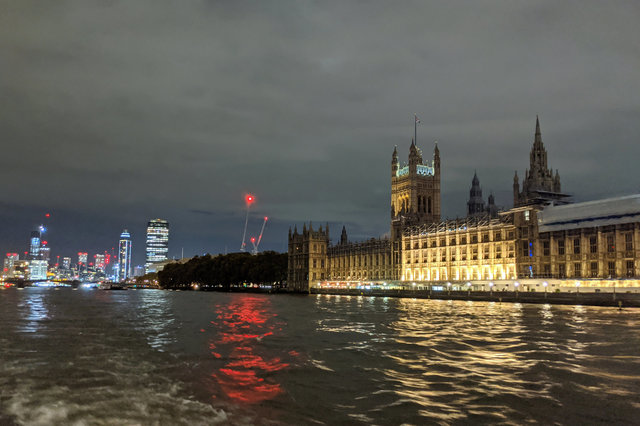An update on the future of retail payments
Started: 2019-11-10 19:23:53
Submitted: 2019-11-11 20:12:27
Visibility: World-readable
In which the intrepid narrator pays another visit to the UK and provides an update on contactless mobile payments
In May, the last time I visited the UK, I experienced for the first time the fancy new retail payment technologies that have been rolled out to other parts of the world that the United States hasn't quite gotten around to using yet. (I am taking this as future proof that the future is here, it's just not evenly distributed yet.) This month I visited London again, this time for a team summit in which most of my team from Seattle flew to visit our team in London for three days of team-building and strategic planning and working out the technical details of the fancy new automation we're building.
This time I set up Google Pay on my Android phone before I left, which is supposed to enable magic contactless payments using a regular credit card. After I set it up I used it once at a retail shop in the United States, then I got on a plane for London. The first time I tried to use it in London was at the Tube turnstile, where I got a confused set of messages on my phone and on the turnstile itself, both of which vaguely said it didn't work but without much useful debugging information. (Later I checked Transport for London's website, which only gave me a somewhat-unhelpful warning that some cards might not work and I need to check with my bank for more information. Later in the week I tried with a different card, which also failed to work with the same unhelpful message.)
My next fallback was the contactless credit card I successfully (if inconsistently) used on my last trip to London. I have been unable to get this card to work as a contactless card in the US at US merchants where this should work (especially places like Starbucks and PCC (the local natural-foods grocery coop that also happens to be my most convenient local grocery store) where it had in the past). I didn't expect it to work at the Tube turnstile at Heathrow but it beeped and let me into the station. This, unfortunately, lulled me into a false sense of security because I couldn't get my card to scan on the turnstile when I reached Russel Square: the blinkenlights seemed to indicate that it had detected the card but was unable to reliably read it. The station attendant tried to help me scan the card, and suggested that I ought to talk to my bank about it (which would have been far more helpful if I were not, at that moment, across an ocean from my bank); the attendant eventually suggested flexing my card by about five millimeters while pressing it onto the reader, which actually worked, letting me exit the Tube with most of my dignity intact.
On my next trip I bought a new Oyster card (because I forgot to bring the Oyster card I've been using on my previous trips to London, probably because I did all of my packing in the last hour before I left for the airport, because I had to wait until I had actually done enough laundry to pack for the trip).
Despite my failures to use Google Pay on the Tube, contactless payments with my phone worked great at (at least, up to £30, according to one cashier) -- I successfully bought coffee with my phone, and it was way more convenient than using a chip-and-PIN card (or even an old-fashioned magnetic strip). All I had to do was unlock my phone (I set up my phone with a fingerprint unlock, which made this part easier) and wave it on top of the card reader -- and my phone would vibrate and the card reader would beep, and the merchant would thank me and I'd go on my way. This, more than anything else, made me feel like I was actually living in the future again -- and that my available payment methods were up to the standards of the Londoners around me.


